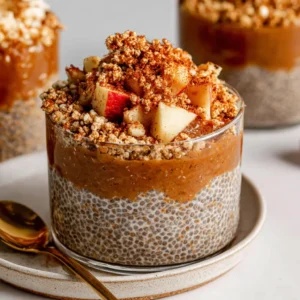Homemade German marzipan, a confectionery delight with roots stretching back centuries, offers a unique sensory experience. Its delicate texture, subtly sweet flavor, and incredible versatility make it a prized ingredient in both traditional and modern baking. This recipe guides you through creating this exquisite treat from scratch, ensuring a result that rivals any store-bought version. Forget the mass-produced, often overly sweet marzipan; this recipe unlocks the potential for a truly authentic, customizable, and intensely flavorful homemade alternative. Imagine the possibilities: shaping it into elegant figurines, adding it to cakes for a luxurious touch, or simply savoring its delicate sweetness on its own. This recipe isn’t just about following instructions; it’s about embarking on a culinary journey, embracing the artistry of creating something truly special from simple ingredients. Prepare to be amazed by the transformation from humble almonds and sugar into a confection that is both incredibly simple and exquisitely elegant.
Why You’ll Love This Homemade German Marzipan Recipe
This recipe for homemade German marzipan is a game-changer for anyone who appreciates quality ingredients and the satisfaction of crafting something delicious from scratch. Forget those mass-produced, often overly sweet versions you find in stores. This recipe allows you to control the sweetness, the texture, and most importantly, the flavor profile. By using finely ground blanched almonds as the base, you achieve an unparalleled richness and nutty depth that is simply unmatched by commercially available marzipan. The subtle sweetness, perfectly balanced with the delicate notes of rosewater or almond extract, creates a symphony of flavors that dances on your palate. Furthermore, making your own marzipan is far more economical than buying it pre-made. This translates into significant savings, especially if you plan to use it in larger projects, such as creating elaborate marzipan figurines or generously decorating cakes.
Beyond the economic benefits, the process itself is incredibly therapeutic. The act of grinding the almonds, carefully combining the ingredients, and kneading the dough is incredibly satisfying. It allows you to connect with the food in a way that simply isn’t possible when using pre-made ingredients. This hands-on experience elevates baking from a task to an enjoyable pastime. Moreover, this recipe is wonderfully versatile. You can customize the flavor by adjusting the amount of rosewater or almond extract, or even experiment with other flavorings, like lemon zest or orange blossom water. The possibilities are endless! You can use your homemade German marzipan to craft beautiful decorative elements for cakes, create elegant figurines, or simply enjoy it as a sweet treat on its own. This is truly a recipe that encourages creativity and culinary exploration.
Why You Should Try This Homemade German Marzipan Recipe
Making your own Homemade German Marzipan provides an unparalleled level of control and customization that surpasses store-bought options. You can tailor the sweetness to your exact preference and experiment with different flavor combinations. Imagine creating marzipan with a hint of orange blossom water or a touch of cardamom – the culinary possibilities are endless! The superior quality of ingredients ensures a richer, nuttier, and more refined flavor compared to mass-produced alternatives, transforming your baking projects from good to extraordinary. Moreover, the process of making your own marzipan is surprisingly simple, even for beginner bakers. The detailed instructions in this recipe, combined with helpful tips and tricks, make achieving a perfect result achievable for everyone.
Beyond the taste and ease of preparation, creating Homemade German Marzipan offers a unique opportunity to connect with the rich history and tradition of this beloved confection. It’s a chance to experience the culinary artistry passed down through generations, infusing your creations with a sense of heritage and personal touch. The finished product is not only delicious but also visually stunning, making it perfect for special occasions or as a thoughtful homemade gift. Furthermore, you’ll save money by avoiding the often high cost of premium store-bought marzipan. The ingredients are readily available and inexpensive, making this a budget-friendly choice while delivering exceptional results. Learn to make this exquisite treat today and elevate your baking to a whole new level of sophistication and enjoyment. You’ll find that the effort is far outweighed by the delicious and rewarding results.
Ingredients and Necessary Utensils for Homemade German Marzipan
This section delves into the specific ingredients and utensils required for creating perfect Homemade German Marzipan. Precise measurements and recommendations for achieving optimal results are detailed below.
Detailed List of Ingredients:
- 1 cup blanched almonds: The foundation of your marzipan. Choose high-quality almonds for the best flavor. Ensure they are thoroughly blanched (skins removed) for a smoother texture. You can find blanched almonds in most grocery stores, or you can blanch them yourself by boiling them briefly and then rubbing off the skins.
- 1 cup powdered sugar, sifted: Sifting removes lumps and ensures a smooth, consistent texture in your final product. Using confectioners’ sugar is crucial for the perfect marzipan consistency.
- 1/4 cup plus 2 tablespoons (60ml) rosewater or almond extract: This provides the characteristic aroma and flavor. Rosewater adds a delicate floral note, while almond extract offers a classic almond taste. Start with less rosewater, as it can be overpowering. Experiment to find your preferred flavor intensity. You can also find other extracts at RecipesLuna.
- 1-2 tablespoons water: Added as needed to achieve the right dough consistency. The amount will vary depending on the moisture content of your almonds and powdered sugar.
- Pinch of salt: Enhances the overall flavor and balances the sweetness.
Recommended Tools and Utensils:
- Food processor or high-powered blender: Essential for grinding the almonds into a fine powder. A food processor will give you the most consistent results.
- Large bowl: For mixing the ingredients. Choose a bowl that’s large enough to comfortably accommodate the dough.
- Whisk: For thoroughly combining the dry ingredients before adding the liquids.
- Measuring cups and spoons: For accurate measurement of ingredients. Precise measurements are crucial for achieving the right texture and consistency.
- Rubber spatula or wooden spoon: For mixing and kneading the dough. A rubber spatula is particularly helpful for scraping down the sides of the bowl.
- Lightly powdered sugar surface: A clean work surface dusted with powdered sugar prevents sticking while kneading the dough. A silicone mat works well for this purpose.
- Airtight container: For storing the finished marzipan in the refrigerator. This helps maintain its moisture and prevent it from drying out.
Detailed Recipe Steps for Homemade German Marzipan
This section provides a comprehensive step-by-step guide to creating your Homemade German Marzipan, complete with practical tips and tricks to ensure success.
Step 1: Grind the Almonds
Grind your blanched almonds into a superfine powder using a food processor. This is a crucial step; the finer the almond powder, the smoother your marzipan will be. Process in short bursts, pausing to scrape down the sides of the bowl as needed, to prevent overheating and clumping. Avoid over-processing, as this can release almond oils and affect the texture of your marzipan.
Step 2: Combine Dry Ingredients
In a large bowl, whisk together the ground almonds, sifted powdered sugar, and a pinch of salt. Ensure all the ingredients are thoroughly combined and there are no lumps. This step forms the base of your marzipan mixture.
Step 3: Add Liquid
Gradually add the rosewater (or almond extract) and water, one tablespoon at a time, mixing thoroughly after each addition. The mixture should gradually come together to form a smooth, pliable dough. Be patient and avoid adding too much liquid at once. The moisture content of your almonds and powdered sugar will influence the amount of liquid needed. The goal is to achieve a dough that holds its shape without being overly sticky or dry.
Step 4: Knead the Dough
Once the dough forms, turn it out onto a lightly powdered sugar surface. Knead the dough vigorously for 5-7 minutes until it becomes smooth, elastic, and no longer sticky. If the dough is too sticky, add a little more powdered sugar, a teaspoon at a time. If it’s too dry, add a tiny bit more water, a half-teaspoon at a time. This kneading process is crucial for developing the marzipan’s texture and creating a smooth, workable consistency.
Step 5: Shape and Enjoy
Once the marzipan is ready, you can shape it into your desired forms. Store the marzipan in an airtight container in the refrigerator to prevent it from drying out. It will keep for several weeks, allowing you to enjoy your homemade confection over time. It’s delightful on its own, or use it for candies, cakes, and other treats. Get creative and try using it in these classic peanut butter cookies!
Tips and Variations for Homemade German Marzipan
This section provides valuable tips to avoid common mistakes and introduces exciting variations for customizing your Homemade German Marzipan.
Avoiding Common Mistakes:
- Don’t over-process the almonds: Over-processing can release almond oils, resulting in a greasy texture. Process in short bursts.
- Add liquid gradually: Avoid adding too much liquid at once, as this can make the dough too wet and difficult to work with.
- Knead thoroughly: Proper kneading is key to developing the marzipan’s elasticity and smoothness. Don’t rush this step.
- Store properly: Keep your marzipan well-sealed in the refrigerator to maintain its freshness and prevent drying.
Ingredient Alternatives and Variations:
- Flavour variations: Experiment with different extracts like almond, lemon, orange, or even a hint of peppermint.
- Nut variations: While almonds are traditional, you can experiment by substituting a portion (not all) with other nuts such as pistachios or hazelnuts (adjust liquid as needed).
- Vegan Marzipan: Replace the rosewater with a plant-based alternative like orange blossom water or other extracts to maintain flavour.
Nutritional Values and Benefits of Homemade German Marzipan
While a treat, Homemade German Marzipan offers some nutritional benefits thanks to its primary ingredient: almonds. Almonds are a good source of:
- Healthy Fats: Almonds are rich in monounsaturated and polyunsaturated fats, which are beneficial for heart health.
- Vitamin E: A powerful antioxidant that protects cells from damage.
- Magnesium: Important for muscle function, blood sugar control, and blood pressure regulation.
- Fiber: Contributes to digestive health.
However, it’s important to remember that marzipan is high in sugar, so it’s best enjoyed in moderation. Precise nutritional values will vary depending on the specific ingredients used and the quantity. For a detailed nutritional breakdown, you could use an online nutritional calculator, inputting the specific ingredients and quantities used in your recipe.
FAQs about Homemade German Marzipan
How long does Homemade German Marzipan last?
Can I make Homemade German Marzipan without rosewater?
What is the best way to grind almonds for Homemade German Marzipan?
Can I use this Homemade German Marzipan for decorating cakes?
Is Homemade German Marzipan difficult to make?
Conclusion: Indulge in Your Homemade German Marzipan
Creating Homemade German Marzipan is a rewarding culinary experience. The process is simpler than you might imagine, and the result is a delicious and versatile confection that will impress your family and friends. Remember the key steps: finely grinding the almonds, carefully balancing the liquids, and thorough kneading are all crucial for achieving the perfect texture and flavor. This recipe allows for customization, letting you experiment with different flavors and create unique marzipan creations. Whether you’re shaping charming figurines, adding a sophisticated touch to your cakes, or simply enjoying its exquisite taste, this homemade marzipan is sure to become a cherished part of your baking repertoire. Don’t hesitate – try this recipe today! Share your experiences and creations in the comments below, and don’t forget to share this recipe with your friends and family on Pinterest! Check out more recipes on my Pinterest!
Let us know in the comments below how your Homemade German Marzipan turned out! Did you make any modifications? What are your favorite ways to use this delicious treat? Share your photos and experiences with us – we’d love to see your culinary creations! And don’t forget to check out other amazing recipes on our blog, including our refreshing Berry Watermelon Fruit Salad and our comforting Creamy White Sauce Pasta.

Homemade German Marzipan: A Deliciously Easy Recipe
Ingredients
Equipment
Method
- Grind the blanched almonds into a fine powder using a food processor.
- In a large bowl, whisk together the ground almonds, powdered sugar, and salt until thoroughly combined.
- Gradually add the rosewater (or almond extract) and water, one tablespoon at a time, mixing well after each addition. The mixture should form a smooth, pliable dough.
- Turn the dough out onto a surface lightly dusted with powdered sugar. Knead for 5-7 minutes until smooth and elastic. Add more powdered sugar if too sticky, or a tiny bit of water if too dry.
- Shape the marzipan as desired. Roll into balls, create figures, or use it as a cake decoration.
- Store the marzipan in an airtight container in the refrigerator to prevent it from drying out. It will keep for several weeks.


